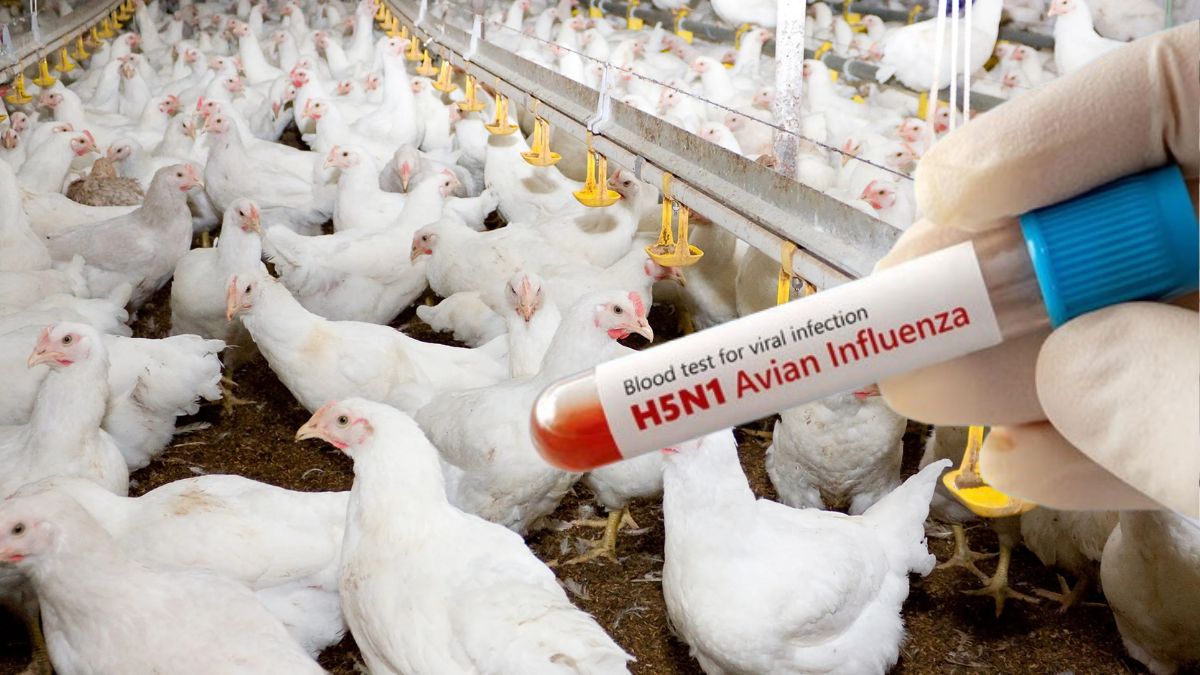By Adeyemi Adekunle
Global health experts are raising alarms over the H5N1 avian influenza virus, warning that its rapid evolution and increasing ability to infect mammals pose a significant global health threat.
The virus, which has devastated poultry populations worldwide, is now infecting a growing range of wild and domestic mammals, prompting fears of a potential pandemic.
“These developments pose significant challenges to animal, human, and environmental health,” said Dr. Gregorio Torres, head of the science department at the World Organization for Animal Health (WOAH), during a press briefing in Geneva on Tuesday.
The virus, commonly known as bird flu, has swept through 108 countries and territories across five continents over the past three years.
Torres said the H5N1 strain has been detected in over 70 mammalian species, including dairy cattle in the United States—a concerning development that marks a critical shift in the virus’s behavior.
“So far, the close monitoring of the virus has not found markers that could suggest effective mammalian adaptation, but we know this can change at any time,” Torres cautioned, emphasizing the need for heightened surveillance.
A Global Outbreak with New Patterns
The World Health Organization (WHO) reported this week that 76 human cases of H5 avian influenza were recorded in 2024, the majority occurring in the United States. Of these, 61 infections were linked to farm workers and individuals exposed to infected poultry or cattle.
“This is the first time we have seen infections from dairy cattle to humans, and so many within the U.S.,” said Dr. Maria Van Kerkhove, WHO’s Director of Epidemic and Pandemic Threat Management.
While there have been no confirmed cases of human-to-human transmission, Van Kerkhove stressed that the situation remains fluid. “The H5N1 viruses have remained avian viruses and have not adapted to spread among people, but this can change quickly as the virus evolves,” she said.
Van Kerkhove further highlighted that while the U.S. has garnered significant attention due to outbreaks in cattle and wildlife, countries such as Australia, Cambodia, Canada, China, and Vietnam have also reported cases of avian influenza, underscoring the virus’s global reach.
A Crisis in Numbers
Since October 2021, H5N1 has caused the deaths of more than 300 million birds globally, devastating poultry industries and livelihoods. The economic toll has been particularly heavy on farmers, many of whom are now reluctant or unable to invest in biosecurity measures to prevent further infections.
Madhur Dhingra, the UN Food and Agriculture Organization’s (FAO) senior infectious diseases officer, described the crisis as a “dangerous cycle” where financial losses lead to increased risk and vulnerability.
“This increases the risk and leads to a dangerous cycle of risk, vulnerability, and loss,” Dhingra said. “In regions heavily reliant on poultry as a primary protein source, highly pathogenic avian influenza (HPAI) poses a serious threat to food and nutrition security.”
Beyond its impact on humans and domestic animals, the virus has ravaged wildlife populations. More than 500 bird species and 70 mammalian species have been affected, including endangered species like the California condor and polar bears. Dhingra noted with particular concern the spread of H5N1 to marine mammals in fragile ecosystems, such as the Antarctic region.
“The biodiversity impacts, particularly among seabirds and marine mammals, are alarming,” Dhingra said. “These disruptions have the potential to trigger cascading effects on ecosystems that are already under stress due to climate change and human activity.”
Human Risk and Precautions
While the WHO continues to assess the risk of H5N1 infection to the general public as low, the organization warns that individuals who work with infected animals face a “low-to-moderate” risk of contracting the virus.
Van Kerkhove urged farmers, cullers, veterinarians, and other exposed individuals to use personal protective equipment (PPE), including masks, gloves, coveralls, and eye protection, to minimize their risk.
In addition, the WHO advised the public to take precautions in areas experiencing outbreaks. This includes consuming only pasteurized milk and thoroughly cooking meat and eggs to eliminate the virus.
“Cows infected with the H5N1 virus have been reported to have high viral loads in their milk,” Van Kerkhove explained. “It is essential that people consume pasteurized milk or heat milk to boiling point if pasteurization is not available. Similarly, cooking meat and eggs thoroughly can ensure food safety in affected regions.”
The Urgent Need for Surveillance
Health experts agree that increased surveillance is key to preventing the H5N1 virus from evolving into a strain capable of human-to-human transmission. Van Kerkhove warned that the world must remain vigilant, despite the fatigue caused by the COVID-19 pandemic.
“We are in an interpandemic period right now, where we have a number of different zoonotic viruses, with avian influenza, H5N1, one of several,” she said. “While we are operating in a state of readiness, I think the world is not ready for another infectious disease outbreak or pandemic because we have lived through COVID, and it was incredibly traumatic.”
Van Kerkhove called on national governments to increase surveillance in both human and animal populations, particularly among those occupationally exposed to the virus. She stressed that each human case must be thoroughly investigated to detect any signs of human-to-human spread.
Economic and Environmental Consequences
The economic implications of the H5N1 virus are substantial. Poultry farming, a critical economic activity for millions worldwide, has borne the brunt of the outbreak. The virus has disrupted supply chains, reduced food production, and created financial instability for small-scale farmers, particularly in developing countries.
In addition, the ecological damage caused by avian influenza has raised concerns among environmental scientists. The virus’s ability to infect endangered species and marine mammals represents a serious threat to global biodiversity.
“The impacts of HPAI on biodiversity are particularly worrying,” Dhingra said. “Seabirds, marine mammals, and other wildlife species are critical components of their ecosystems, and disruptions could have far-reaching consequences.”
A Race Against Time
Experts agree that the world must act swiftly to contain the spread of H5N1 and prevent it from evolving into a greater public health crisis. The WHO, WOAH, and FAO have called for a coordinated global response, emphasizing the importance of international cooperation to monitor the virus, enhance biosecurity measures, and protect vulnerable populations.
Dr. Torres of WOAH reiterated that while the virus remains primarily avian, its ability to infect mammals—and now humans—demands immediate attention. “We must stay ahead of the virus’s evolution,” Torres said. “This means strengthening surveillance systems, investing in research, and ensuring that farmers, health workers, and the public are well-informed and protected.”
As the H5N1 crisis unfolds, the world faces an urgent challenge: to prevent the virus from escalating into a full-blown pandemic while mitigating its economic, environmental, and human impacts. The lessons of COVID-19 loom large, serving as a stark reminder of the consequences of unpreparedness in the face of a rapidly spreading virus.
“We are recommending vigilance at all levels,” Van Kerkhove said. “The virus is evolving, and while the risk to the general population remains low, this could change at any time. We must act now to protect people, animals, and our environment from this growing threat.”
For now, health officials emphasize that simple precautions—such as wearing protective gear, cooking food thoroughly, and consuming pasteurized milk—can significantly reduce the risk of infection. However, they warn that the long-term solution lies in global collaboration, robust surveillance, and proactive measures to curb the spread of the H5N1 virus.
With the stakes so high, the message from global health experts is clear: the world must remain vigilant, prepared, and united to confront this emerging health threat before it spirals out of control.




